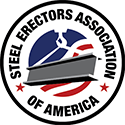 The United States Internal Revenue Service (IRS) has released several items containing guidance related to Paycheck Protection Program (PPP) loans—specifically for businesses planning to seek forgiveness for the loans. In short, the IRS says that since businesses will not be taxed on the proceeds of a forgiven PPP loan, if a business reasonably believes the loan will be forgiven in the future or the business qualifies for forgiveness, costs related to the loan can not be used as a tax deduction for federal taxes. If the business expects the loan to be forgiven, and the loan is not, in fact, forgiven, the business will be able to deduct the costs from its taxes. Click here to read the entire article. Both reeling from economic shockwaves induced by the COVID-19 pandemic, the U.S. national economy and the Built Environment are in uncharted territory. Over the past several weeks, both engineering and construction (E&C) firms and industry service providers have been scrambling to get a handle on the situation and brace for the associated financial impacts—particularly with respect to liquidity.
By now, much of the low-hanging liquidity fruit has been picked, including extending lines of credit, securing payroll protection program (PPP) funding and reducing discretionary spending. However, the industry is far from out of the woods, and liquidity management will be a business imperative for the foreseeable future. Click here to read the entire article. Liquidity describes the degree to which an asset or security can be quickly bought or sold in the market at a price reflecting its intrinsic value. In other words, liquidity is the ease of converting an asset into cash (per Investopedia). Liquidity is important to a business, especially in a time of crisis. No one expected a pandemic like the coronavirus (COVID-19) to have such a large impact on the U.S. economy. Contractors with a financial plan to handle a crisis will fare better than those without one. What contractors have all learned from this experience is that one thing can quickly change the course of the future.
Contractors that are highly liquid have a better chance of managing the financial constraints of this pandemic than those that are not. They will be able to turn their assets into cash faster for their true value. Low liquidity assets may be harder to sell for their true values. Most common examples of liquid assets are cash, certificate of deposits, marketable securities, short term loans, accounts receivables, bills receivables, stock, government bonds and promissory notes. Non-liquid assets include real estate, materials, equipment, collectibles and retirement accounts. Click here to read the entire article. Single-family housing starts exemplify the construction economy’s COVID-19 heartbreak in the first quarter of 2020.
Total 2019 residential starts were 1.4 million units, just 0.3% above 2018, with single-family starts down 1,000 and multifamily up 1%. “We expected 2020 single-family starts to decline mildly again,” Richard Branch, chief economist with Dodge Data & Analytics told webinar attendees on April 9. “But Q1 was the best quarter since 2007 – 940,000 units (seasonally adjusted annualized rate).” Then March became a tale of two months; housing starts growing early as the construction season unfolded, in line with March of 2019. And then the virus hit. Construction moratoria and stay-at-home orders in the last week doused so much work. “Q2 home sales probably could fall by 50% compared to Q1, bringing us back to the levels we last saw during the Great Recession in 2007, 2008 and 2009,” Branch says. “And that could be optimistic, depending on how long the stay-at-home and physical-distancing requirements stay in place. Click here to read the entire article. Single-family housing starts exemplify the construction economy’s COVID-19 heartbreak in the first quarter of 2020. Total 2019 residential starts were 1.4 million units, just 0.3% above 2018, with single-family starts down 1,000 and multifamily up 1%.
“We expected 2020 single-family starts to decline mildly again,” Richard Branch, chief economist with Dodge Data & Analytics told webinar attendees on April 9. “But Q1 was the best quarter since 2007 – 940,000 units (seasonally adjusted annualized rate)." Then March became a tale of two months; Dodge expects Q2 single-family home sales could fall by 50%, to Great Recession depths, but begin to recover quickly in 2021.housing starts growing early as the construction season unfolded, in line with March of 2019. And then the virus hit. Construction moratoria and stay-at-home orders in the last week doused so much work. Click here to read entire article. Confidence among U.S. construction industry leaders generally improved in January, consistent with the burgeoning momentum of the U.S. economy during the early weeks of 2020, according to the Associated Builders and Contractors Construction Confidence Index released last week. While the reading for sales expectations edged lower for the month, confidence pertaining to sales, profit margins and staffing levels remain well above the threshold of 50, signaling expected growth in those three metrics.
As of January 2020, nearly 72% of contractors expected to expand their staffing levels over the next six months, while more than 68% expect their sales levels to increase. Approximately 51% expect their profit margins to increase, a reflection of skills shortages that have driven costs higher and stunted profit margin growth among many contractors. That said, fewer than 10% of contractors expected profit margin declines over the next two quarters. Click here to read the entire article. CORONAVIRUS DISEASE (COVID-19) IN CONSTRUCTION: LIABILITY, RECORDABILITY, AND FINANCIAL IMPLICATIONS4/7/2020
Over the past few weeks, it’s become clear that the world is facing a remarkable health crisis.
The coronavirus pandemic has now been detected in most countries worldwide, creating personal, practical, and legal implications for those in the construction industry. To address business considerations of the COVID-19 threat, employers should consider multiple categories of concern:
Recordability, EMR, and Insurance Costs A recent publication from the Occupational Safety and Health Administration (OSHA) has confirmed that COVID- 19 is a recordable event; this means that employees who contract the virus while at work must be recorded on an employer’s OSHA300 Log. These cases may be compensable under Worker’s Compensation if it can be proven that the virus was contracted on the job (which is fairly simple to uphold if multiple employees become infected at the same time). In other states, it has already been decided that Worker’s Compensation will be extended to workers exposed to COVID-19 on the job and will be inclusive of time in quarantine, medical testing, medical expenses, and indemnity payments while out of work. Considering the long incubation and recovery periods associated with COVID-19, these recordable events are likely to have high levels of “Days Away From Work” and “Restricted Duty”; furthermore, due to the contagious nature of the virus, there is significant potential for multiple cases within a company after the first case appears. An employer’s Experience Modification Rate (EMR) is calculated based upon both of these figures (number of claims and severity of claims). This means that a COVID-19 situation in the workplace has the potential to make a company’s EMR, as well as the corresponding insurance premiums, skyrocket. These figures are kept on a company’s record for a total of three years, thus impacting the ability to bid and receive work long term. Legal Considerations When thinking about the legal implications of COVID-19, employers should consider the regulatory requirements outlined by various parties. A few of the regulatory agencies most pertinent to the construction industry, as well the standards which apply to the COVID-19 pandemic, are outlined below: Occupational Safety and Health Administration (OSHA)
Financial Considerations Due to COVID-19’s impact on global supply chains, it is likely that the spread of the virus will result in delays and cost overruns in the construction industry. China, one of the world’s largest exporters of building materials, is currently experiencing a 17.2% decline in exports. The party that bears the risk and the losses resulting from construction delays and increased costs associated with materials shortages will be dictated by contract. Contractors would be wise to review contracts currently underway and consider making revisions to contracts soon approaching.
The data surrounding coronavirus spread in the United States is staggering, and the Center for Disease Control and Prevention (CDC) as well as the World Health Organization (WHO) are encouraging continued adjustments and accommodations in the work setting. As business leaders, it is important to consider all categories noted above while navigating this chaotic period. The importance of emergency action planning, business continuity, and remote work/alternate revenue sources cannot be over stressed. Written by: - Julia Kunlo, Certified Safety Professional (CSP), Vice President of Evolution Safety Resources - Ashley L. Felton, Senior Counsel, Michael Best & Friedrich LLP - Adam P. Banks, Senior Counsel, Michael Best & Friedrich LLP |


 RSS Feed
RSS Feed
